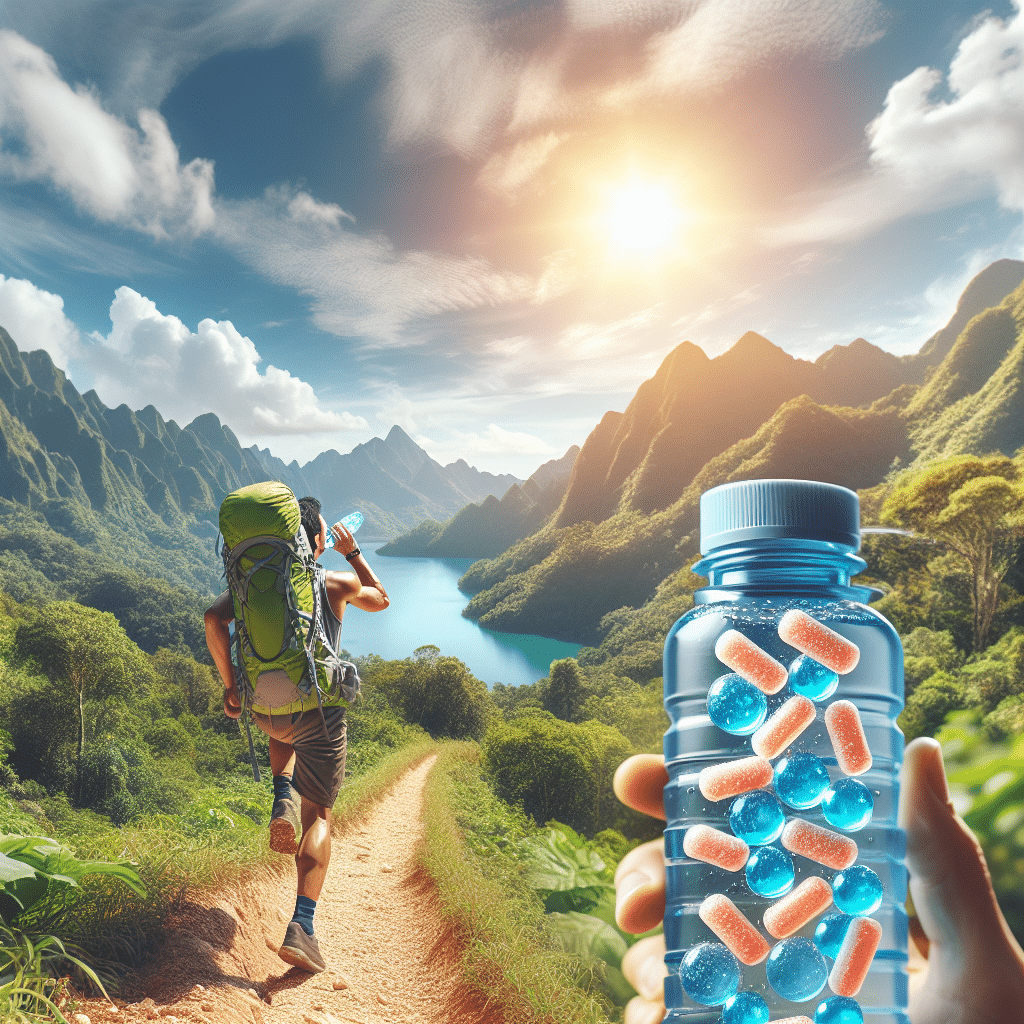Understanding Hydration and Electrolytes
Long trail adventures are exhilarating but demanding; they require careful planning to ensure optimal performance. Among the most critical aspects of preparation is managing hydration and electrolyte retention. Hydration refers to maintaining adequate fluid levels in the body, while electrolytes—such as sodium, potassium, magnesium, and calcium—are essential minerals that help regulate nerve and muscle function, maintain acid-base balance, and assist in hydration.
The Importance of Hydration
During extended physical activities, the body loses water primarily through sweat. This process helps regulate body temperature but can lead to dehydration if fluid intake doesn’t match fluid loss. Symptoms of dehydration include thirst, dry mouth, fatigue, dizziness, and decreased performance. Maintaining proper hydration can enhance endurance, cognition, and overall enjoyment of the trail.
Signs of Dehydration
Recognizing the signs of dehydration is crucial for long trail adventures:
- Mild Dehydration (1-2% body weight loss): Thirst, dry mouth, and slight fatigue.
- Moderate Dehydration (3-5% body weight loss): Increased heart rate, reduced urine output, headache, dry skin.
- Severe Dehydration (6%+ body weight loss): Dizziness, confusion, sunken eyes, extreme fatigue, and heat-related illnesses, potentially requiring immediate medical attention.
Hydration Strategies
To ensure hydration during long trail adventures, consider these strategies:
-
Pre-hydration: Begin your adventure well-hydrated. Drink water and electrolyte solutions the day before to prepare your body.
-
Regular Intake: Set a schedule to drink water regularly, such as every 20-30 minutes. Aim for 0.5 to 1 liter of fluids per hour, adjusting based on temperature, exertion level, and individual needs.
-
Use a Hydration System: Carry a hydration pack or a water bottle that you can easily access while on the move. This encourages regular sipping rather than large, infrequent gulps.
-
Monitor Urine Color: A simple way to assess hydration levels on the trail is by monitoring urine color; pale yellow indicates good hydration, while dark yellow points to dehydration.
Understanding Electrolytes
Electrolytes play a significant role in maintaining hydration levels. When you sweat, you lose not just water but also essential electrolytes. The balance of these minerals affects performance, muscle function, and overall well-being during outdoor activities.
The Role of Key Electrolytes
-
Sodium: The most significant electrolyte lost in sweat. Sodium helps retain water in the body and is crucial for proper muscle function. Insufficient sodium can lead to hyponatremia, characterized by headaches, confusion, and muscle cramps.
-
Potassium: Helps regulate fluid balance and muscle contractions. The loss of potassium can result in muscle weakness, cramps, and increased fatigue.
-
Magnesium: Involved in over 300 biochemical reactions in the body, magnesium helps with muscle function and energy production. Low levels can lead to cramping and fatigue.
-
Calcium: Essential for muscle contractions and nerve function. It also plays a role in bone health.
Electrolyte Replacement Strategies
To ensure electrolyte levels are balanced during long trail adventures, incorporate the following strategies:
-
Electrolyte Supplements: Consider using electrolyte powders or tablets that dissolve in water. Opt for formulations that provide sodium and potassium to replenish losses.
-
Sports Drinks: These beverages often contain both electrolytes and carbohydrates, offering a quick source of energy while replenishing lost fluids. Choose options with lower sugar content to avoid spikes in blood sugar.
-
Whole Foods: Incorporate electrolyte-rich foods into your trail snacks. Options include bananas (potassium), nuts (magnesium), salty snacks (sodium), and dairy products (calcium).
-
Salt Tablets: In hotter conditions or strenuous activities, salt tablets can be beneficial. Consult with a sports nutritionist before using them to determine appropriate dosage.
Balancing Hydration and Electrolytes
Finding the optimal balance between hydration and electrolyte retention requires careful consideration. Over-hydration can dilute electrolyte levels, leading to hyponatremia. To avoid this, ensure your hydration plan includes electrolyte replacement, especially in high-temperature environments or extended durations of exertion.
-
Understand Individual Needs: Everyone has different hydration and electrolyte needs based on body weight, sweat rate, and environmental conditions. Keep track of your body’s reactions and adjust plans accordingly.
-
Pre-race Testing: Before embarking on major trails, conduct tests during long runs or hikes to find the right balance of fluids and electrolytes that works best for you.
-
Adapting to Environmental Factors: Heat and altitude can significantly increase fluid and electrolyte needs. Prepare to adjust your intake based on the conditions.
Additional Tips for Long Trail Hydration and Electrolyte Management
-
Hydration Stations: Familiarize yourself with points on the trail where water sources are available. Always treat water sourced from nature to prevent waterborne illnesses.
-
Practice Good Hydration Habits: Ensure to blend fluids and electrolyte sources during training to simulate the conditions you expect on the trail.
-
Stay Educated: Keep yourself informed about hydration research and recommendations for athletes engaged in endurance sports. Join forums or groups where experience and tips can be shared with fellow adventurers.
-
Listen to Your Body: Pay attention to how you feel throughout your journey. Fatigue, cramping, or unusual thirst can all be indications that adjustments are needed in your hydration and electrolyte approach.
-
Plan for Recovery: Hydration and electrolyte balance doesn’t end with your adventure. Post-activity recovery is essential. Replace fluids and electrolytes lost during the day with a combination of water and replenishing foods.
Approaching long trail adventures with a well-thought-out hydration and electrolyte strategy will significantly impact your performance and enjoyment. By understanding the importance of managing both fluids and electrolytes, the chances of dehydration and associated complications diminish, ensuring a safe and enjoyable experience on the trail.
